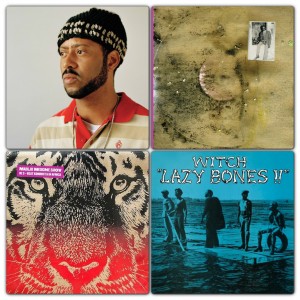By: Colin Greaney (History Major, Class of 2013. [In April, Prof. Markle delivered a lecture for The Mill Faculty Lecture Series, a new student-led initiative that provides a space for Trinity faculty to share their research and scholarship]
 “The study of hip-hop in academia requires thoughtful consideration of the African diaspora, a largely coerced diffusion of Africans via the trans-Atlantic slave trade. Uniting the various forms and expressions of hip-hop from the Americas, Caribbean, and Europe is the sense of connection, real or imagined, to Africa. Many black artists will speak of “going home” in a spiritual sense, since they – and many generations prior – may never have been to the continent. Out of this academic lens, two other areas are worth consideration. First, scholars who eschew the study of hip-hop cite that the discussion relies too heavily on the character of the Master of Ceremony (MC), and the lyric contents he or she includes. The delivery of lines, the underlying musical influences, and the self-aware approach are all neglected to some degree. This problem was born in part by the music industry’s premium on the economic viability of producing music.”
“The study of hip-hop in academia requires thoughtful consideration of the African diaspora, a largely coerced diffusion of Africans via the trans-Atlantic slave trade. Uniting the various forms and expressions of hip-hop from the Americas, Caribbean, and Europe is the sense of connection, real or imagined, to Africa. Many black artists will speak of “going home” in a spiritual sense, since they – and many generations prior – may never have been to the continent. Out of this academic lens, two other areas are worth consideration. First, scholars who eschew the study of hip-hop cite that the discussion relies too heavily on the character of the Master of Ceremony (MC), and the lyric contents he or she includes. The delivery of lines, the underlying musical influences, and the self-aware approach are all neglected to some degree. This problem was born in part by the music industry’s premium on the economic viability of producing music.”
“Another topic is the notion, popularized by Nas, that “Hip-Hop is dead.” This in part speaks to the prior topic regarding the music industry’s stifling of creativity for profit. But, as evidenced by the Los Angeles-based Madlib, creativity and contemplation in the genre is not dead, but rather marginalized by mainstream culture. Madlib stresses the importance of “crate-digging,” or searching the annals of hip-hop for records to inspire new composition, as a salient feature of his creative process. He also prefers to work from his own studio, to record freestyles and improvisations, and to do minimal or no editing. The result is a sonic landscape that taps into a raw and unfiltered creativity that certainly challenges Nas’ contention that hip-hop is dead.
Madlib’s music consciously fuses together eclectic sound and self-aware lyrics, but there’s just as much to study in the history of African and imperial cultures. In the copperbelt strip of Zambia, where imperial interests industrialized the region far ahead of nearby countries in order to extract precious minerals, musical influences from abroad permeated Zambian television and music. Notably, 1960s and 70s psychedelic rock found its way first to Zambian listeners, then to Zambian recording studios. Herein lies a perfect example of hip-hop’s worthiness of scholarly consideration: the diaspora, by the late 19th century, became a permeable, two-way phenomenon in which styles were transported, adapted, and made unique to a culture or a movement.”

